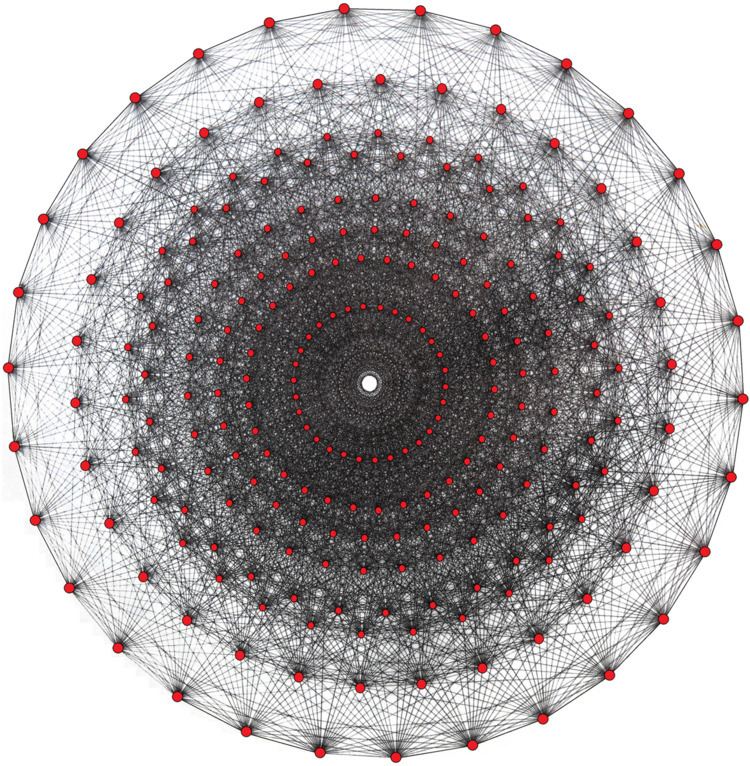 | ||
In 4-dimensional complex geometry, the Witting polytope is a regular complex polytope, named as: 3{3}3{3}3{3}3, and Coxeter diagram . It has 240 vertices, 2160 3{} edges, 2160 3{3}3 faces, and 240 3{3}3{3}3 cells. It is self-dual. Each vertex belongs to 27 edges, 72 faces, and 27 cells, corresponding to the Hessian polyhedron vertex figure.
Contents
Symmetry
Its symmetry by 3[3]3[3]3[3]3 or , order 155,520. It has 240 copies of , order 648 at each cell.
The numerical matrix for 3{3}3{3}3{3}3 is:
Coordinates
Its 240 vertices are given coordinates in
where
The last 6 points form hexagonal holes on one of its 40 diameters. There are 40 hyperplanes contain central 3{3}3{4}2, figures, with 72 vertices.
Witting configuration
Coxeter named it after Alexander Witting for being a Witting configuration in complex projective 3-space:
The Witting configuration is related to the finite space PG(3,22), consisting of 85 points, 357 lines, and 85 planes.
Related real polytope
Its 240 vertices are shared with the real 8-dimensional polytope 421, . Its 2160 3-edges are sometimes drawn as 6480 simple edges, slightly less than the 6720 edges of 421. The 240 difference is accounted by 40 central hexagons in 421 whose edges are not included in 3{3}3{3}3{3}3.
The honeycomb of Witting polytopes
The regular Witting polytope has one further stage as a 4-dimensional honeycomb, . It has the Witting polytope as both its facets, and vertex figure. It is self-dual, and its dual coincides with itself.
Hyperplane sections of this honeycomb include 3-dimensional honeycombs .
The honeycomb of Witting polytopes has a real representation as the 8-dimensional polytope 521, .
